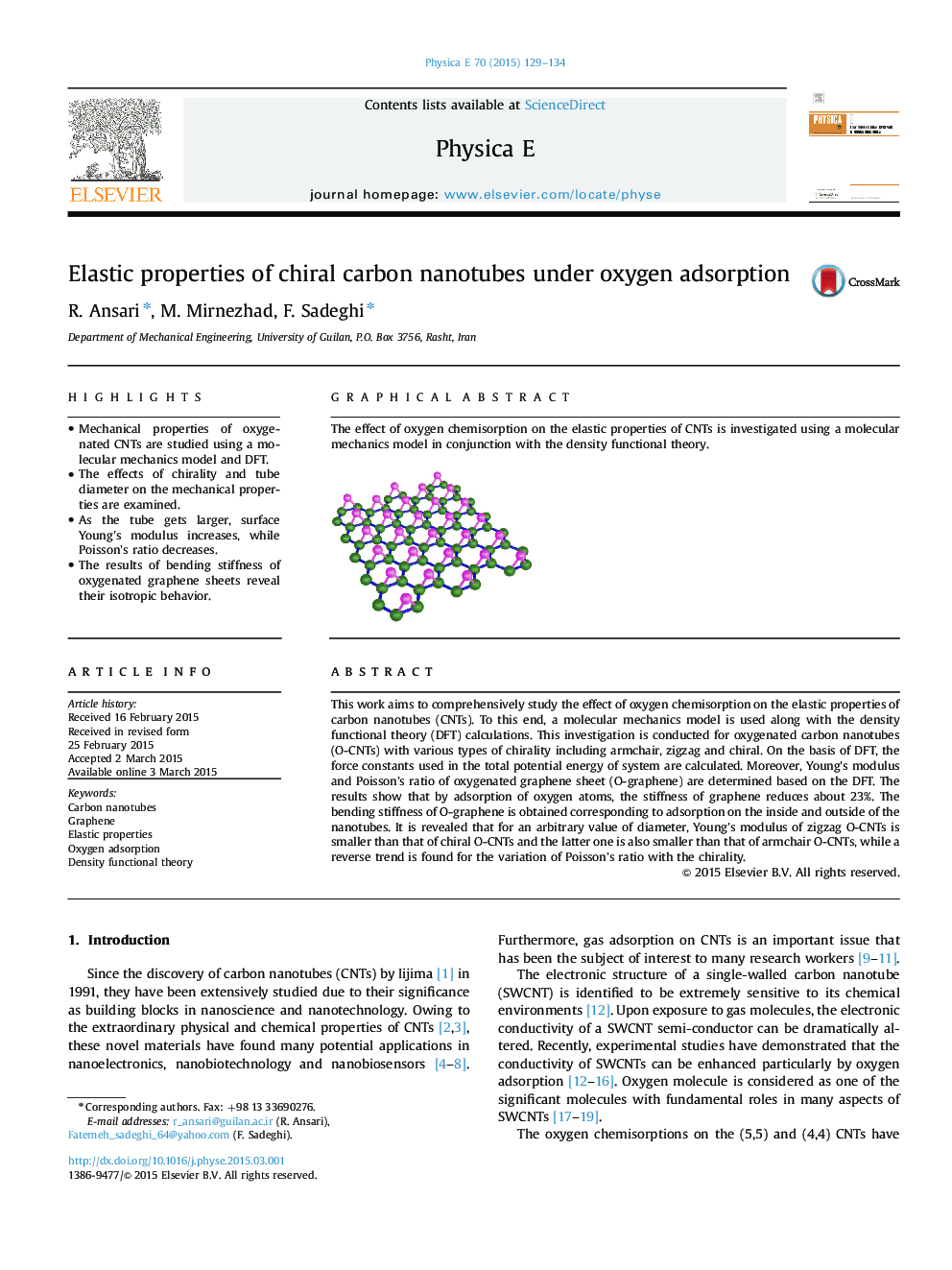| Article ID | Journal | Published Year | Pages | File Type |
|---|---|---|---|---|
| 1544097 | Physica E: Low-dimensional Systems and Nanostructures | 2015 | 6 Pages |
•Mechanical properties of oxygenated CNTs are studied using a molecular mechanics model and DFT.•The effects of chirality and tube diameter on the mechanical properties are examined.•As the tube gets larger, surface Young's modulus increases, while Poisson's ratio decreases.•The results of bending stiffness of oxygenated graphene sheets reveal their isotropic behavior.
This work aims to comprehensively study the effect of oxygen chemisorption on the elastic properties of carbon nanotubes (CNTs). To this end, a molecular mechanics model is used along with the density functional theory (DFT) calculations. This investigation is conducted for oxygenated carbon nanotubes (O-CNTs) with various types of chirality including armchair, zigzag and chiral. On the basis of DFT, the force constants used in the total potential energy of system are calculated. Moreover, Young's modulus and Poisson's ratio of oxygenated graphene sheet (O-graphene) are determined based on the DFT. The results show that by adsorption of oxygen atoms, the stiffness of graphene reduces about 23%. The bending stiffness of O-graphene is obtained corresponding to adsorption on the inside and outside of the nanotubes. It is revealed that for an arbitrary value of diameter, Young's modulus of zigzag O-CNTs is smaller than that of chiral O-CNTs and the latter one is also smaller than that of armchair O-CNTs, while a reverse trend is found for the variation of Poisson's ratio with the chirality.
Graphical abstractThe effect of oxygen chemisorption on the elastic properties of CNTs is investigated using a molecular mechanics model in conjunction with the density functional theory.Figure optionsDownload full-size imageDownload as PowerPoint slide
